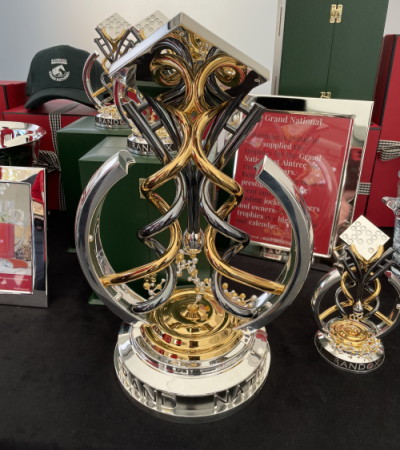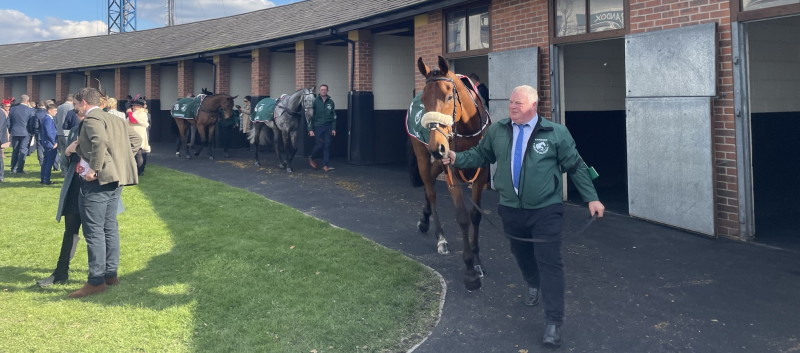Do More Grand National Entries From A Trainer Equal More Success?
One of the big changes we have seen in recent years with the Grand National is the number of entries that certain trainers will put into the race. They are looking to dominate things and give themselves as many chances of winning as possible. But does that translate to a better chance of winning the race?
There’s probably not an easy answer to this question. Of course, if you have five runners out of 40, then you have a great chance in number terms than someone who has one runner from the 40 entries. However, then you need to look at the actual chances of each horse winning the race. Would you rather have one chance that is the favourite or five chances that are all 100/1 or bigger in odds?
Trainers have taken a very different approach to this in the past few years, and both have given success in different ways.
The Scatter Gun Approach

We’ve seen some trainers recently take what can best be described as a scattergun approach to runners in the Grand National. Gordon Elliott is a typical example of this, he’s had success while doing it, though it has also failed him too.
In 2018, Tiger Roll won the Grand National, he was one of three runners for Elliott that year. In 2019, Tiger Roll won the race again, but this time, Elliott had 11 runners in the race, so more than a quarter of the field. This was followed by seven runners in 2022, with no winner, and five runners in 2023, again without winning the race. 2023, in particular, is an interesting year for Elliott, as despite having five runners in the race, none of those actually managed to complete the course.
What Elliott will say about his approach is that the Grand National is a unique test where you need an incredible amount of luck to win, and by having as many runners as possible, he widens his chances of winning. We often say that the best horse in the race doesn’t win the Grand National, so having outsiders in there still gives him a chance of winning.
From a betting point of view, in recent years, many of the Elliott runners have been big odds and had a very low chance of winning. Both times he’s had a leading contender, with Tiger Roll, he’s won, and he’s also had horses such as Delta Work run well, but the rest, those outsiders have failed to fire.
Another trainer who has gone down this route recently has been Willie Mullins, with so many good horses capable of running in this race. He had four runners in 2019, 2021, 2022 and then five runners in 2023. He failed to win the race in any of these years but finished with one horse placing in the contest in three of those four years, so for Mullins, it paid off in a sense.
There are not too many trainers who have enough runners to be able to throw a scatter gun approach at the Grand National, but those who do, are certainly using it, looking at the stats. It may have no impact on the race because, more often than not, the fancied runners are those that finish closest, but as Gordon Elliott, Willie Mullins, and others will tell you, anything can happen in the Grand National, and someone has to win.
Carefully Selecting Grand National Runners
 For most trainers, the only option is to carefully select their Grand National runners because they only have a small number of horses good enough and with enough stamina to run in the race. This means that in terms of numbers, these trainers have less chance of winning than those above, but in terms of genuine chances, can they have a better chance with fewer numbers?
For most trainers, the only option is to carefully select their Grand National runners because they only have a small number of horses good enough and with enough stamina to run in the race. This means that in terms of numbers, these trainers have less chance of winning than those above, but in terms of genuine chances, can they have a better chance with fewer numbers?
One of the reasons why they could is because they can work out a training regime and race plan for the horse, doing precisely what they need to get their Grand National runner trained to perfection for the big day.
Perhaps the best recent example of someone doing this well is Lucinda Russell. When she’s had a Grand National contender in the yard, she’s taken the time to work out how they are going to get to the big race and give them the best chance of winning. During her entire career, she’s only had seven attempts to win the Grand National, which is four less than what Gordon Elliott had in 2019 alone, never mind the attempts during his full career.
From those seven runners, Russell has won the Grand National twice, with One for Arthur in 2017 and then Corach Rambler in 2023. On both occasions, those horses have been the only potential Grand National runner in the yard, they’ve had a perfectly mapped-out preparation for the race and been trained to the minute.
By being the only one, has this enabled Russell to give that extra bit of care and attention to the runners she’s had, giving her success? It’s certainly a possibility and something that smaller trainers would be able to take advantage of when they cannot compete with the numbers that the likes of Elliott and Mullins have.
Whatever the answer, no one can doubt that Lucinda Russell has quickly developed into someone with a great Grand National record and is a trainer to take note of in the race.
Which Approach is Correct?

The easy way to answer this is to say that there is no correct approach, both have positives and negatives attached to them. While Lucinda Russell has shown she’s excellent when targeting one horse at the Grand National, for all we know, she could have the same excellence with all five runners if she entered five in the race.
From the other perspective, having a lot of runners hasn’t hampered Gordon Elliott too much because he’s been able to train Tiger Roll to success in two Grand Nationals. He also had the added bonus of having a few outsiders in the field, and you never know what will happen in a race of this nature.
We don’t want to see falls and horses taken out of the race, buts should something like that happen, affecting a lot of the runners, it only takes a little bit of luck to be out of the way, and all of a sudden one of the outsiders could win the race.
Both options are not open to everyone, and for that reason, we expect to see both approaches continue to be used in Grand Nationals of the future.
